The Yucatán Peninsula is dotted with ancient Mayan cities, each with its own character, layout, and atmosphere. During our family travels, we visited three of the region’s most famous ruins: Tulum, Cobá, and Chichén Itzá. While Chichén Itzá is the most iconic, Tulum and Cobá offered something unique, especially for families who enjoy exploring history in bite-sized doses. Here’s what to expect and how to make the most of your visit.
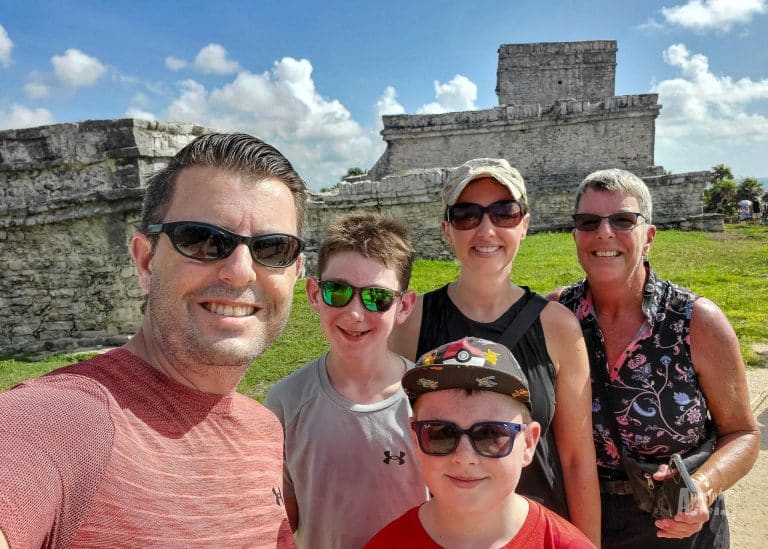
Tulum Ruins
Tulum is a must-see, in my opinion. Unlike other Mayan cities tucked deep in the jungle, Tulum’s location is dramatic, perched on limestone cliffs overlooking the Caribbean Sea. Once a walled port city, thriving as a trade hub from the 13th to the 15th centuries, today it’s one of the most photogenic archaeological sites in Mexico. The view alone is worth the trip!
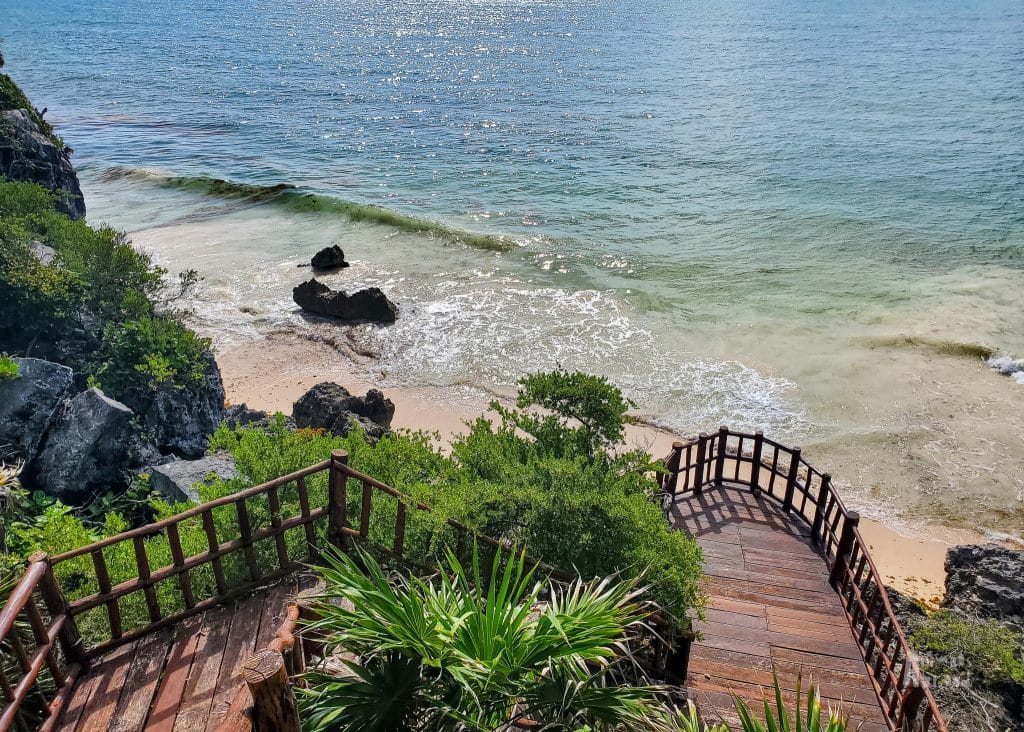
The ruins are compact, walkable, and easy to explore, making them ideal for a short visit. We spent about an hour walking through the pathways, stopping often to admire the views and flora, and peer into stone chambers. The resident geckos darting along the ancient walls especially captivated the boys.
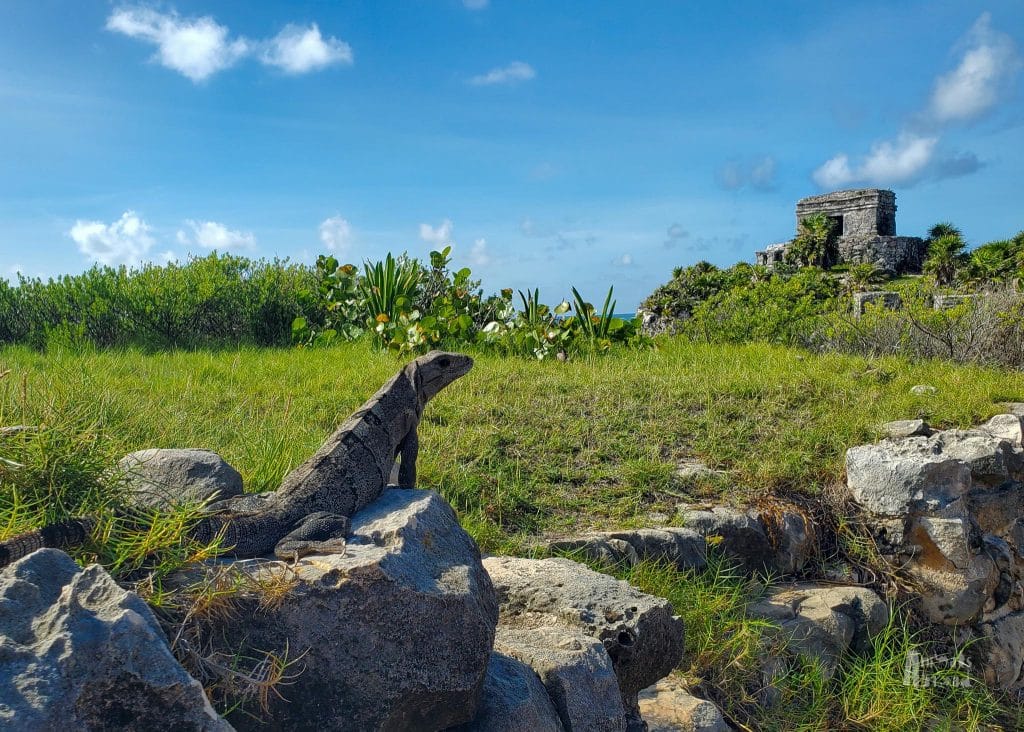
What to See
• El Castillo: The main temple is built on the cliff edge. It likely served as both a watchtower and a lighthouse.
• Temple of the Frescoes: Known for well-preserved murals.
• Cliffside viewpoint: Offers stunning photo ops over the turquoise sea, even though swimming is no longer permitted at the beach below.
Note: Tulum has limited shade, and the site can get very hot. Go early, bring hats and water, and try to beat the crowds and heat.
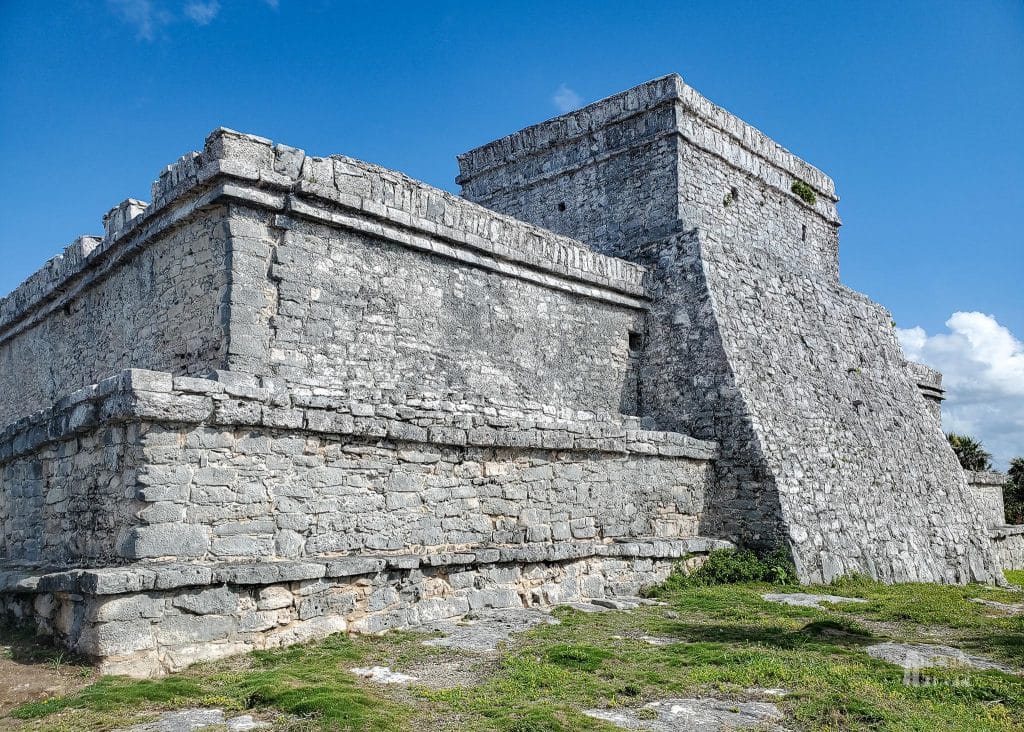
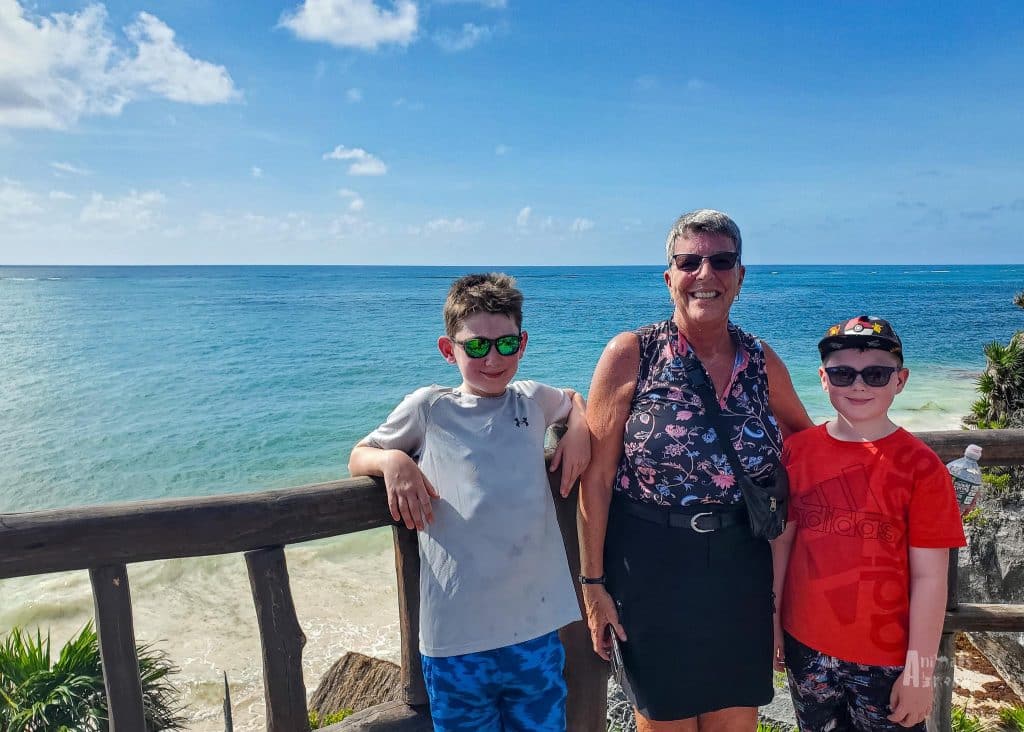
Cobá Ruins: Jungle Trails and Hidden Temples
Cobá feels the opposite of Tulum — instead of ocean views and manicured lawns, its remnants are scattered through dense jungle, connected by sacbeob, ancient stone roads.
This once-powerful city dates as early as 600 AD and was home to up to 50,000 people at its peak. While many buildings look similar, the setting feels wild and adventurous, especially for kids.
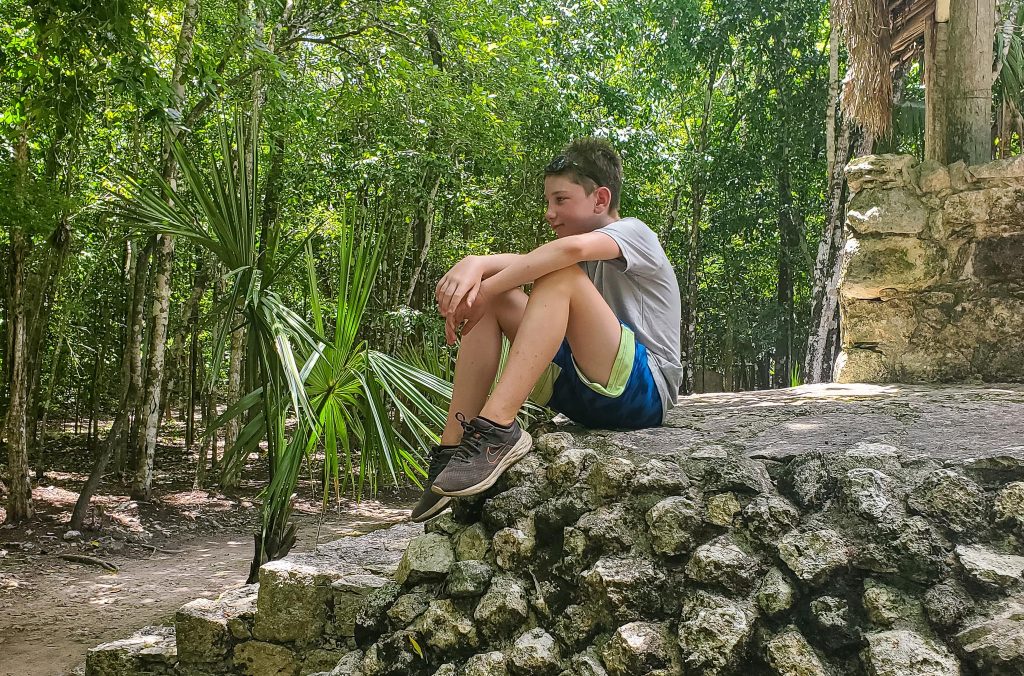
The site is extensive, so be prepared to cover some ground. Walking is doable too, thanks to the shade provided by the thick forest canopy, but it can still be challenging in the heat. Bike rentals or rickshaw-style tricycle taxis are available. The boys especially loved their ride back from the main pyramid.
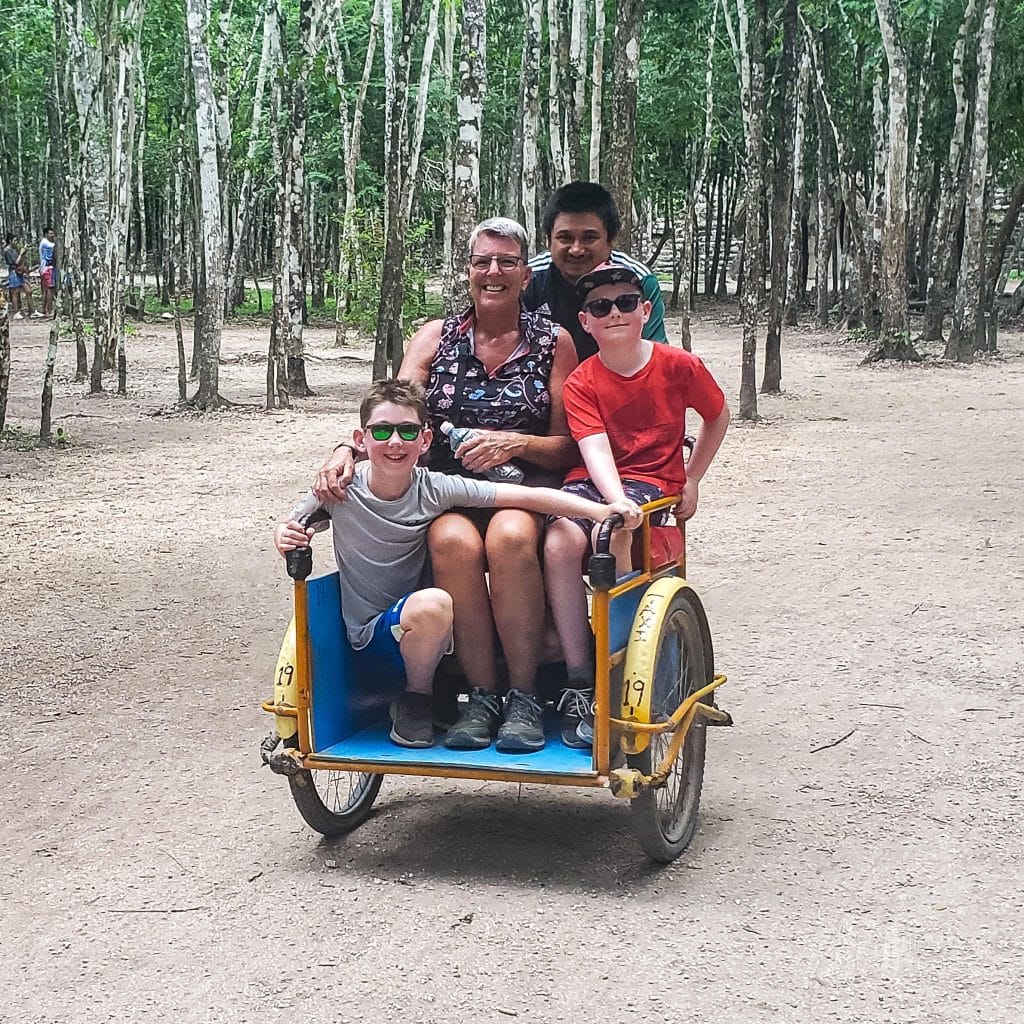
What to See
• Nohoch Mul Pyramid: At 42 meters (138 feet), it’s one of the tallest pyramids in the Yucatán. You used to be able to climb it, but access is now restricted. Even from the base, it’s an impressive sight.
• Ball courts and small temples along the forest paths.
• Stone causeways (sacbeob) that connect different clusters of ruins.
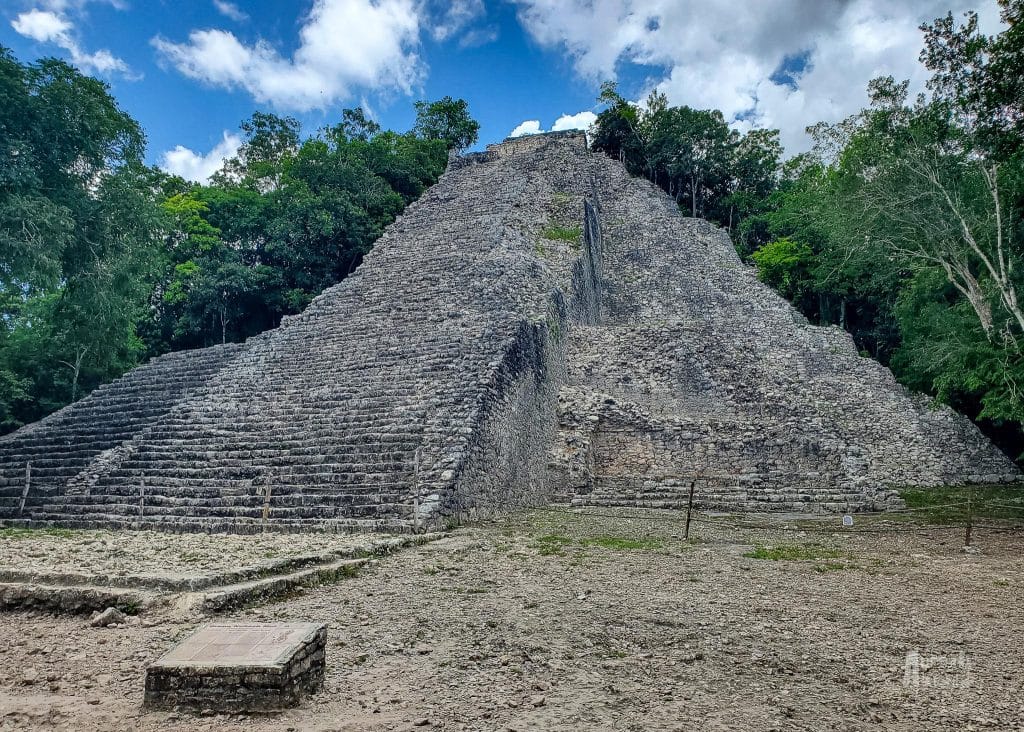
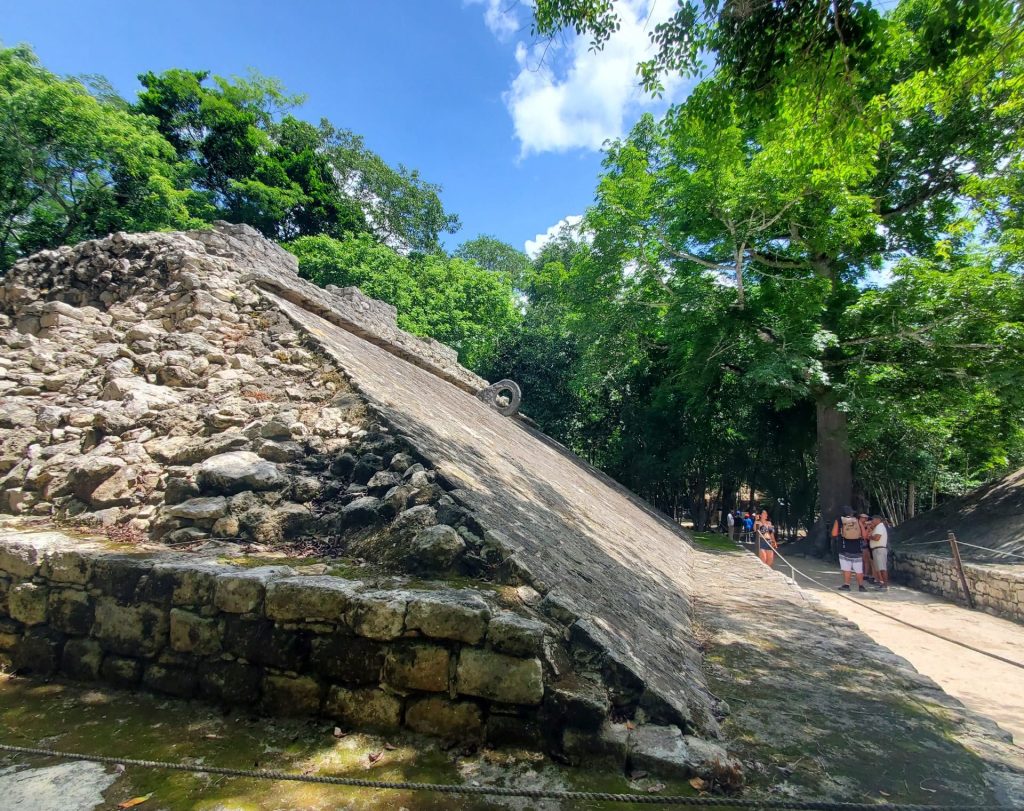
What stood out to us wasn’t the structures but the sense of discovery — walking through shaded paths, surrounded by jungle sounds, with temples and pyramids suddenly appearing through the trees, felt like an Indiana Jones-style adventure.
Tip: If visiting Tulum and Cobá on the same day, the shaded grounds at Cobá make it a better choice for the afternoon or hotter days.
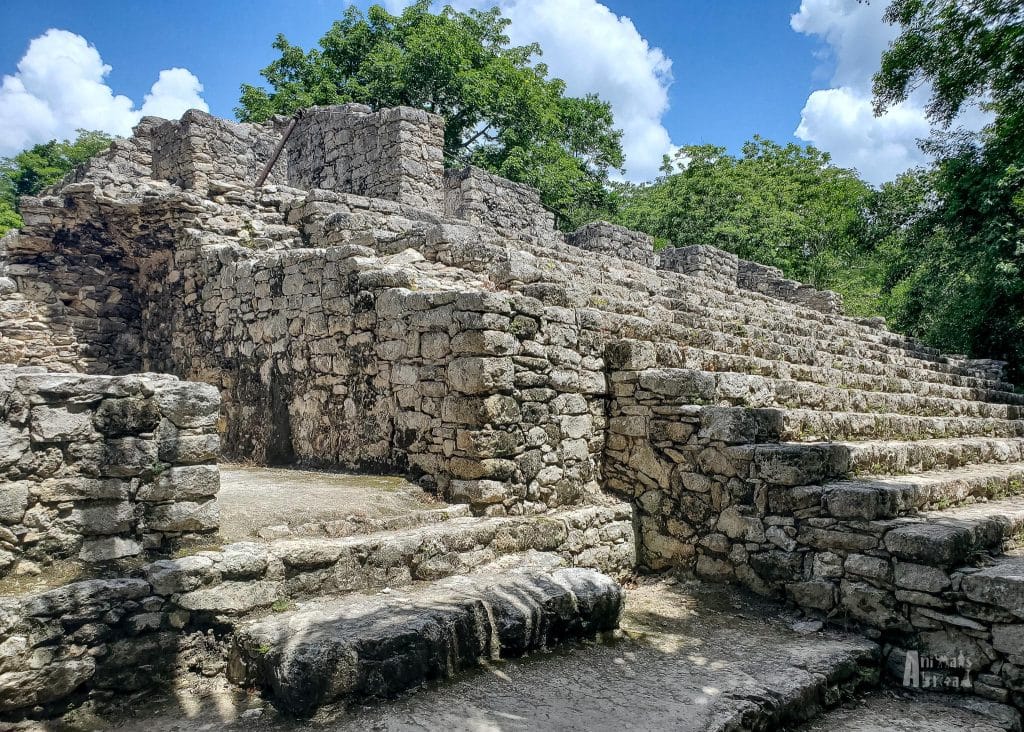
Entry Fees
At Tulum and Cobá, we encountered two entry fees: one for the INAH (archaeological authority) and another as a state tax. Expect to pay in cash (in pesos), and bring small bills if possible.
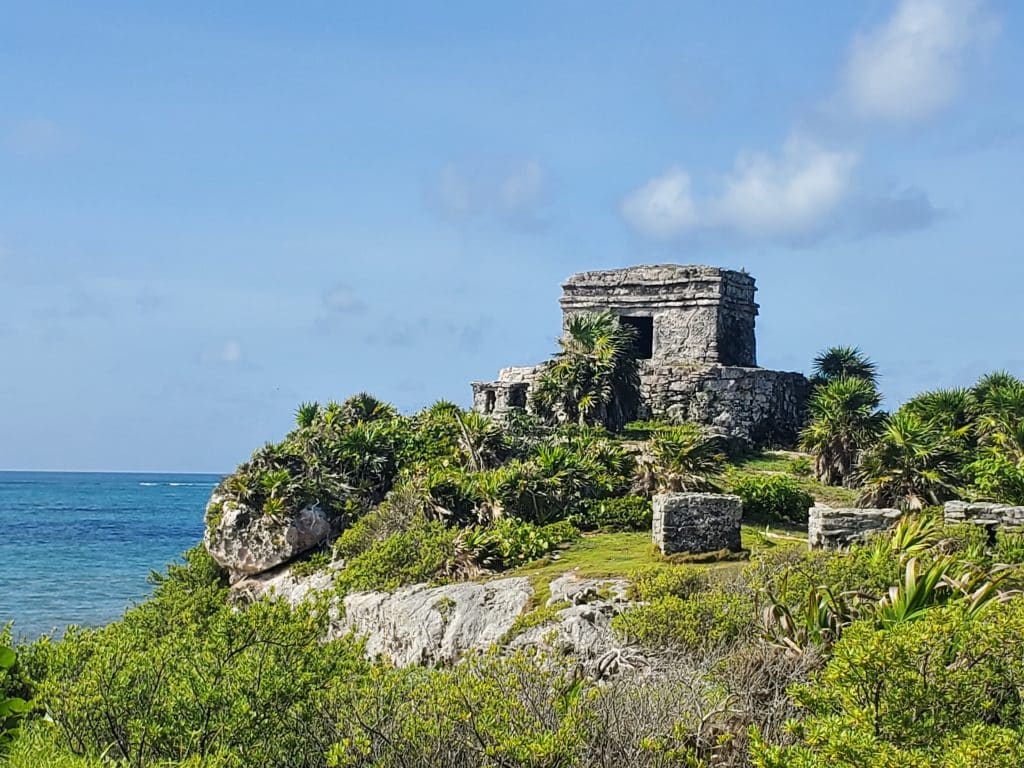
Tips for Visiting Maya Ruins with Kids
• Start Early: Arriving early means cooler temperatures, quieter paths, and a more peaceful experience.
• Plan for Half Days: Explore in the morning and cool off in a cenote in the afternoon.
• Sun Protection & Hydration: Tulum offers limited shade. Bring hats, sunscreen, and lots of water — or flavoured drinks like Gatorade to encourage the kids to hydrate.
• Wear Comfortable Shoes: These sites require lots of walking. Sneakers or sturdy sandals are ideal.
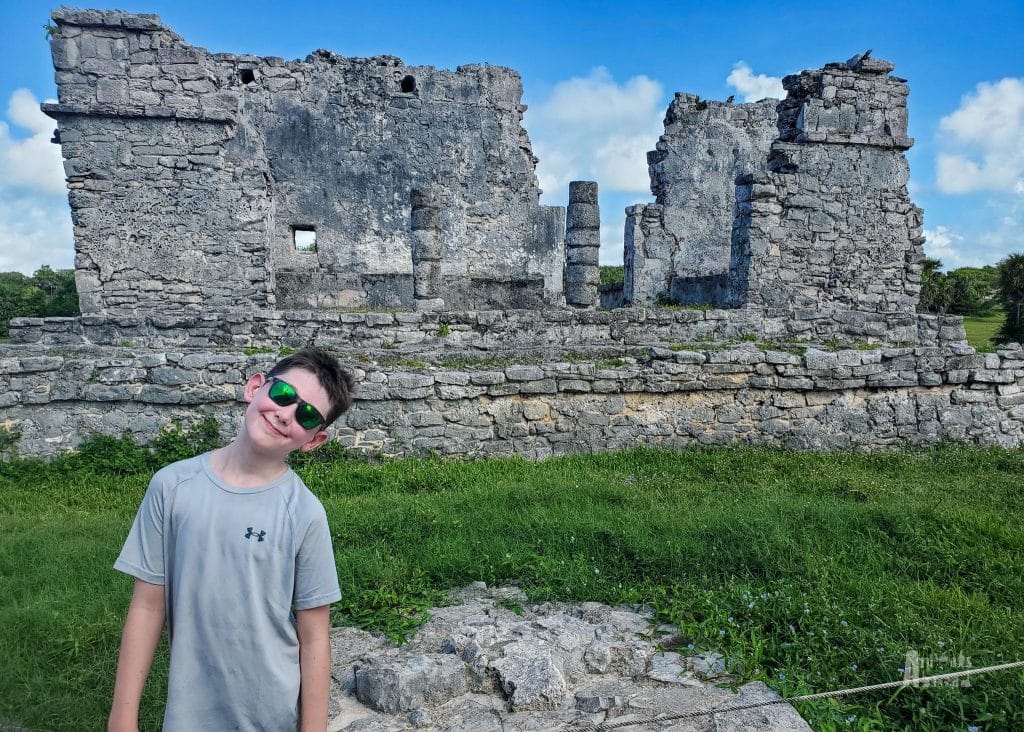
Cool Off at a Cenote Nearby
After a hot and dusty morning at the ruins, nothing beats a refreshing dip in a cenote. These natural freshwater sinkholes are unique to the Yucatán and are perfect for swimming, snorkelling, or just soaking in the scenery.
Cenotes near Tulum
• Cenote Calavera: A photogenic cenote with a ladder and rope swing. Great for brave jumpers.
• Gran Cenote: One of the most popular cenotes, with shallow areas, caves, and snorkelling with turtles.
• Cenote Escondido & Cenote Cristal: Two quieter, open-air cenotes just a short drive from town.
Cenotes near Cobá
• Cenote Choo-Ha, Tamcach-Ha, and Multun-Ha: A trio of cenotes, each offers a different experience. One is open and shallow, another is deep with platforms to jump from, and one is in a cave with cool, still water.
Tip: Some cenotes require life jackets (available for rent), and many only accept cash. Bring towels and water shoes.
What About Chichén Itzá?
If you’re planning a trip to the Yucatán, you might be wondering how Tulum and Cobá compare to the famous Chichén Itzá ruins. While Tulum offers stunning seaside views and Cobá lets you climb ancient pyramids surrounded by jungle, Chichén Itzá is the grandest and most iconic Mayan site, rich in history and architectural wonders.
If you’re considering a stop, we highly recommend it. For a detailed, step-by-step guide on visiting Chichén Itzá and the nearby colonial city of Valladolid, including tips on going solo, beating the crowds, and what to see, check out our full post, Chichén Itzá: Why Going on Your Own is Better.
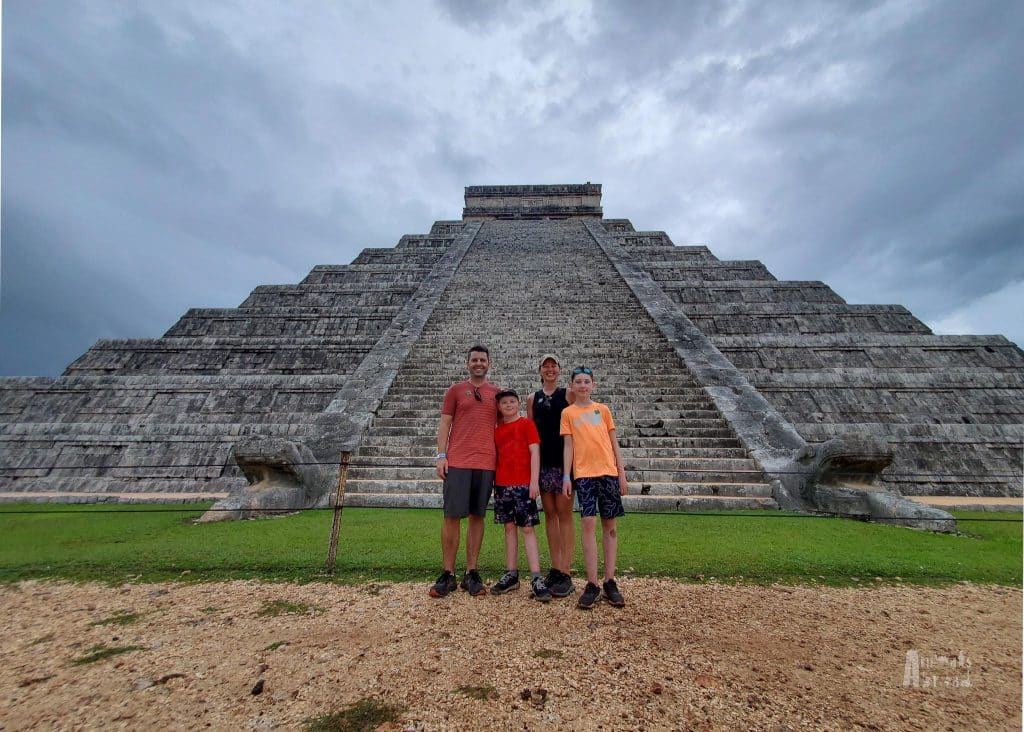
A Walk Through History
Each of these ruins provides a unique glimpse into Maya civilization. Tulum is a winner for dramatic views and a quick, easy visit. For shade, space to explore, and a sense of mystery, Cobá has its charm. And for world-class scale and significance, Chichén Itzá rounds out the trio.
Whether you’re road-tripping through the Yucatán or just looking for a memorable family outing, visiting these sites is an exciting way to connect with history — and keep the kids curious and engaged.
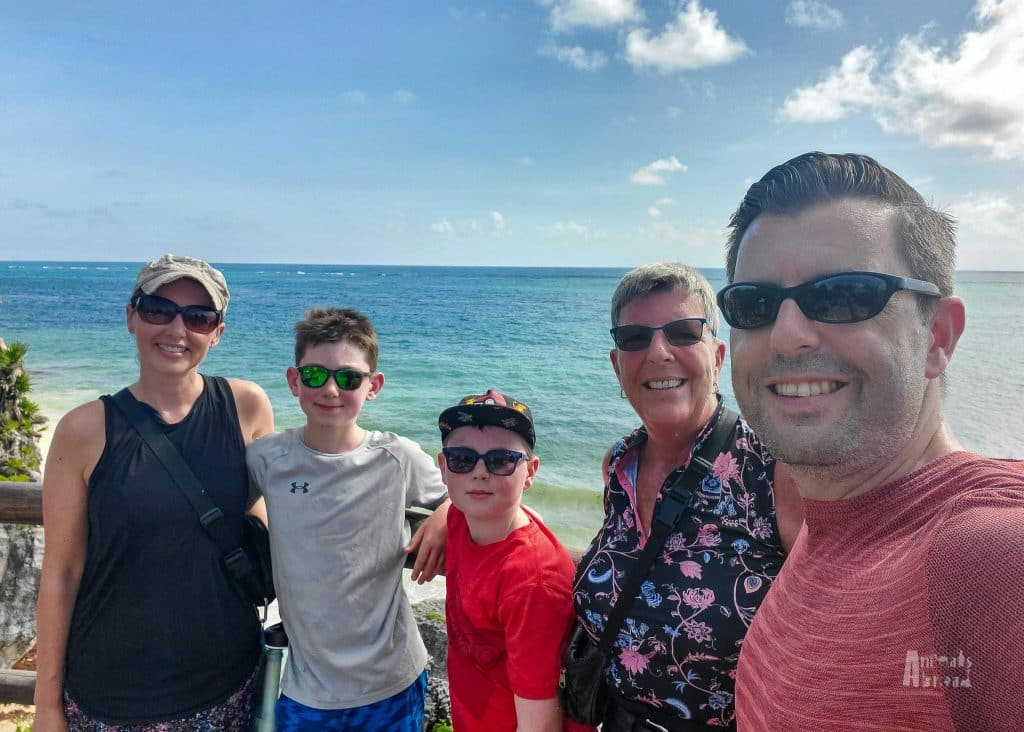
Ready to Explore Mexico?
Check out these related posts to help plan your trip:
• Cancun Whale Shark Adventure with Kids: Know Before You Go
• Chichen Itza – Why Going on Your Own is Better
• Two-Day Cozumel Itinerary with Kids

